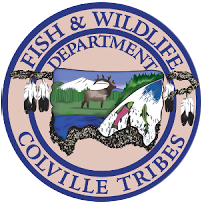Chief Joseph Hatchery
Chief Joseph Hatchery
is a state-of-the art facility that was built to increase spring, summer, and fall chinook salmon in the Okanogan and Columbia Rivers. The hatchery will produce up to 2.9 million chinook fry annually and will provide salmon for tribal ceremonies, subsistence needs for tribal members, and increase recreational fishing opportunities for all. The $50 million hatchery was completed in May 2013 and is located in Bridgeport, Washington next to Chief Joseph Dam.
Chief Joseph Hatchery PDF
Fact Sheet PDF
Selective Harvest
Selective harvest is a tool used to collect natural and hatchery-origin chinook broodstock for Chief Joseph Hatchery (CJH). The tribes have been selectively harvesting chinook salmon in the Columbia and Okanogan Rivers using a fishing boat called the Dream Catcher. Fisheries staff collect what is needed for the CJH program and release wild salmon unharmed so they can continue to the spawning grounds. Staff use a large seine (a net with sinkers on one end and floats on the other) and when the net is full of fish, the ends are pulled together. Excess hatchery fish are distributed to tribal members for ceremonial and subsistence needs. Any sockeye salmon that is caught are also distributed to the membership.
Selective Harvest Goals are to:
Support Chief Joseph Hatchery brookstock collection efforts
Secure the Colville tribal harvest allocation and protect resources
Release natural-origin fish unharmed to create healthier salmon runs
Recover listed species (spring chinook and summer steelhead)
Prevent future listings (summer/fall chinook and sockeye salmon)
Create harvest opportunities for individuals, while serving the communal effort to protect our resources for present and future generations
Reestablish subsistence and ceremonial harvest for tribal members while increasing recreational sport fishing opportunities in the Columbia and Okanogan Rivers
Okanogan Fish Weir
A fish weir is set up in the Okanogan River each season as another selective harvest method used to collect natural and hatchery-origin broodstock for CJH. The weir is used to live-capture Chinook salmon, survey fish, and allows natural-origin salmon to continue upstream to the spawning grounds. Once the needs of CJH are met, any excess hatchery salmon are distributed to the membership. Weirs are a traditional fishing method used by tribal fishermen and was once built of wood; today the structure is built of metal and PVC pipe.
"Studies have shown that too many hatchery fish on the spawning grounds are a competitive and genetic risk to wild spawners. Removing excess hatchery fish is critical to the long-term viability of the population," said Casey Baldwin, senior research scientist for CTFW.




